LED test / review
EN
Cree XLamp XP-P U5 color kit E3
XPPAWT-H0-0000-0000U50E3

Luminance is becoming increasingly important. Not only in the automotive sector does the ability of an LED to deliver the highest possible surface brightness enjoy an ever higher priority, but flashlight enthusiasts also appreciate the possibility of achieving higher ranges than before with smaller optics. Since as early as the end of 2018, Osram has been offering exactly this option with attractive pricing with the CSLNM1 and PM1 (test here) as well as the old Black Flat. Now Cree has also followed suit and offers within the scope of a new product offensive exactly what Osram has been offering for a long time: high luminance with acceptable power consumption, without having to mechanically adjust the emitter beforehand.
Technical data
Tj 25 °C, If 1,000 mA
Type: single die, domeless
Bin: U5, typ. 360 lm
Color kit: E3 (≈ 5000 K)
Rated voltage: typ. 3.10 V max. 3.50 V
Forward current: max 3,000 mA
Peak current: ---
Viewing angle: typ. 115°
Thermal resistance: typ. 2.3 °C/W
Max. temperature Tj: max. 150 °C
Official datasheet: Cree XP-P (PDF, 2.4 MB)
First appearance
The Cree XP-P looks very similar to the well-known Osram CSLNM1.TG. The square yellow luminous surface is surrounded by a white housing, there is no silicone dome. While the white coating on the CSLNM1 is made of hard heat-resistant plastic, it is made of elastic silicone on the XP-P, which can be removed with fingernails or tweezers with the appropriate amount of force.
A number is printed on the white silicone, probably a batch or serial number. However, I could not recognize a date code.
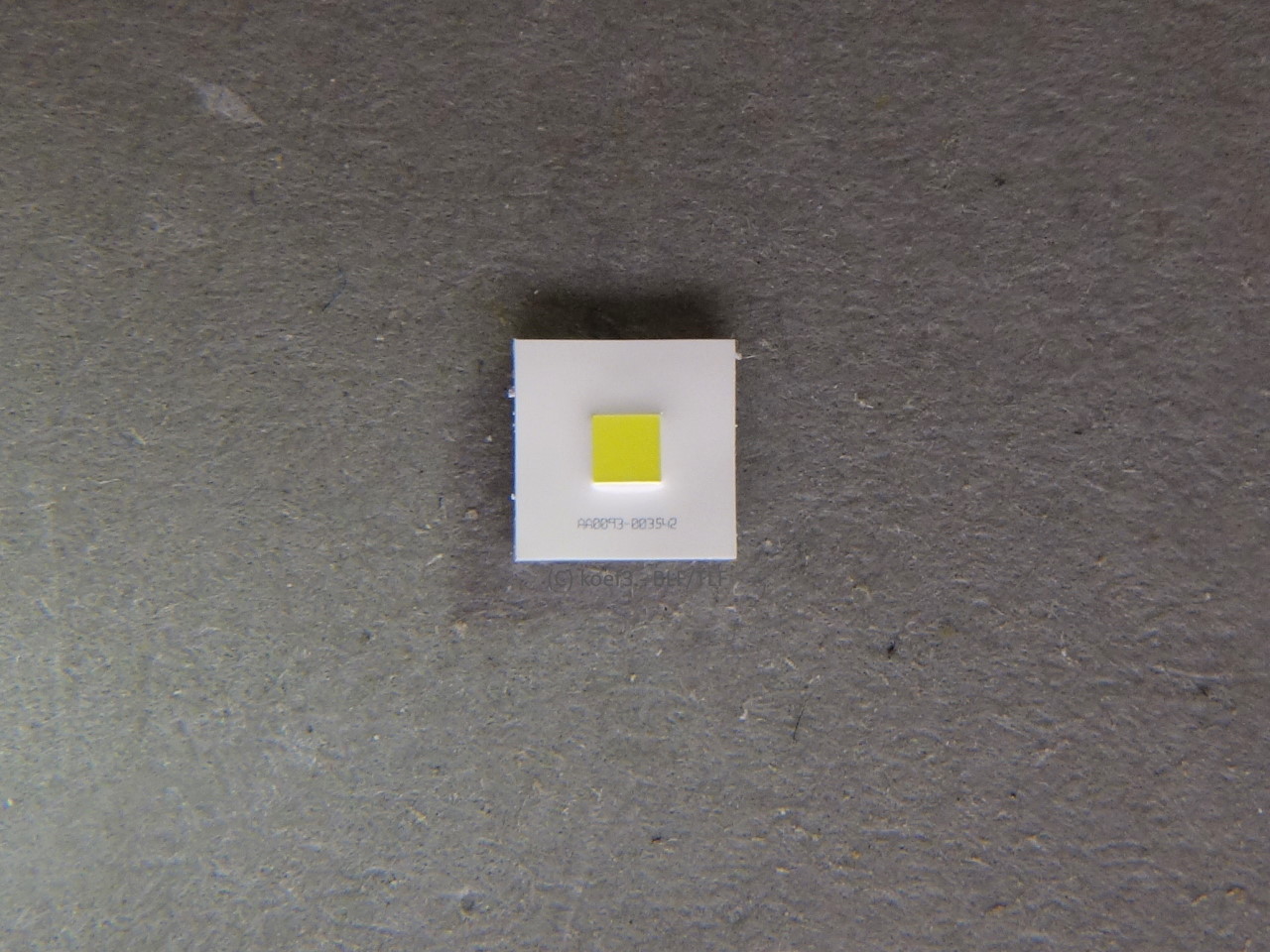

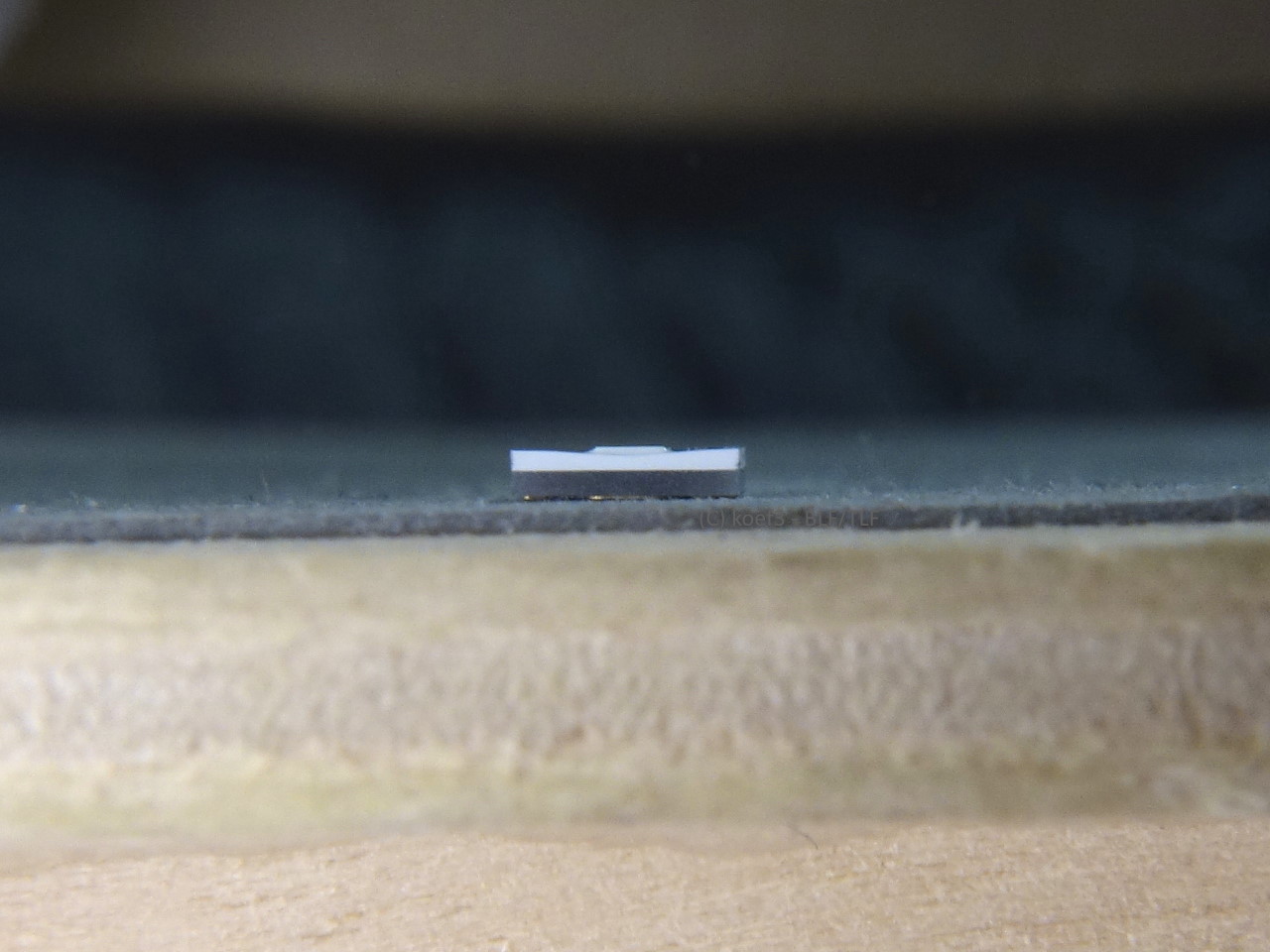
The side view shows that the white coating also covers the sides of the luminous surface. This should at least reduce or even prevent unwanted lateral radiation. The luminous surface has a smooth coating, so damage of the phosphor layer during normal handling is relatively unlikely.
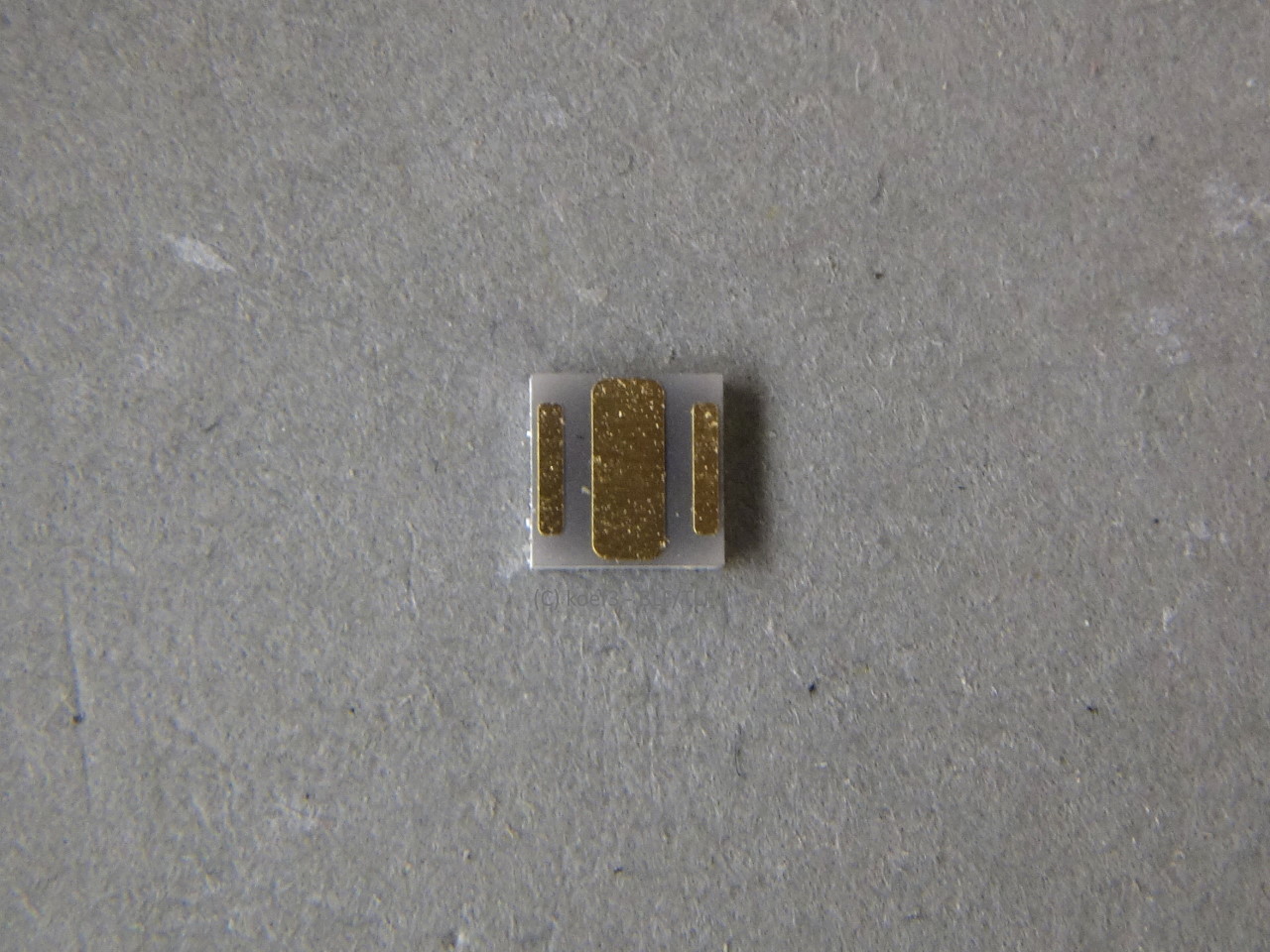
The footprint as well as the housing dimensions correspond to those of the XP-LEDs. The XP-P can therefore be used freely with accessories for XP footprint. Due to the square housing dimensions, centering rings made by lathe can also be used. All in all, this LED is very similar to the CSLNM1.TG.
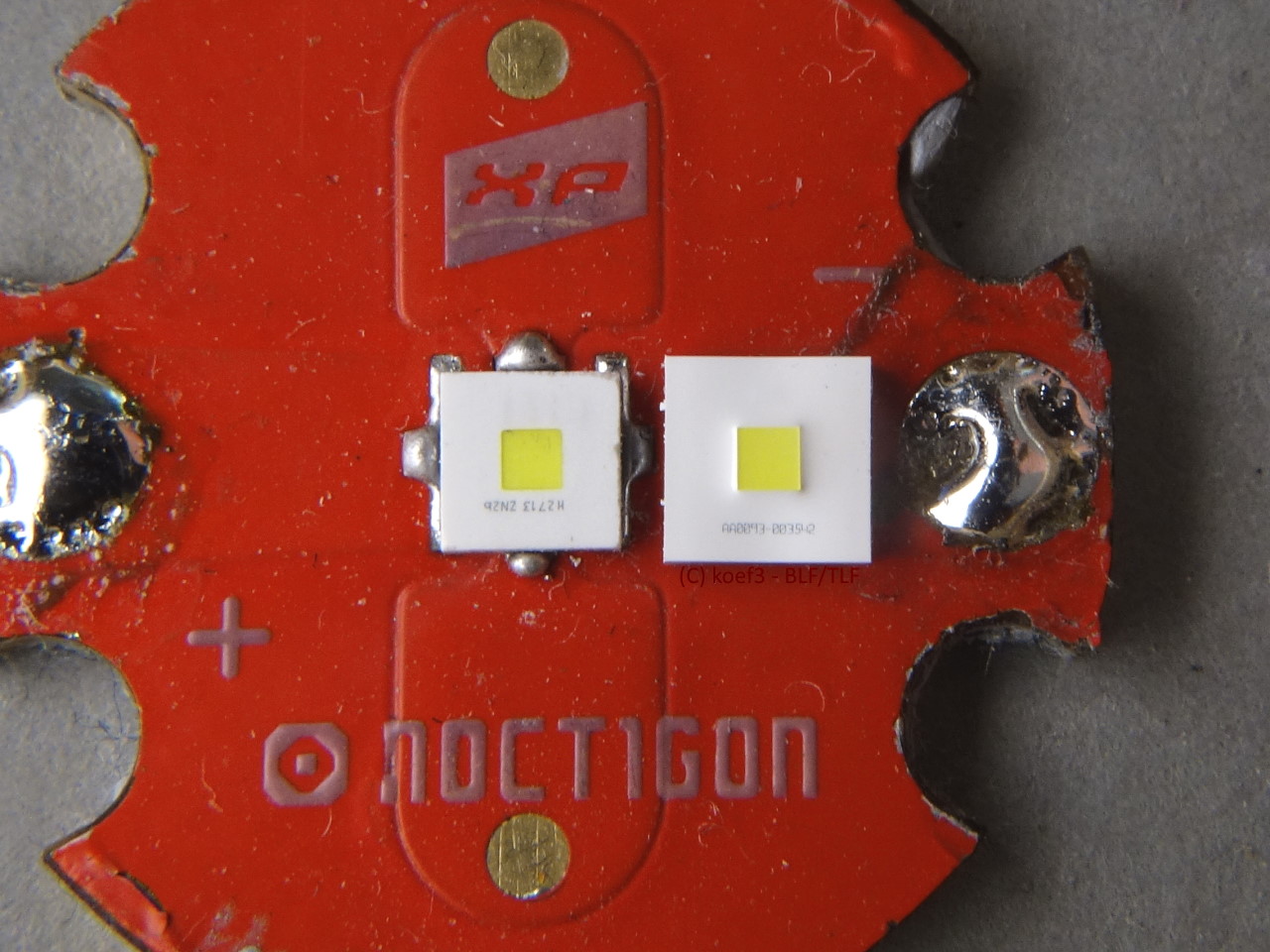
LED chip
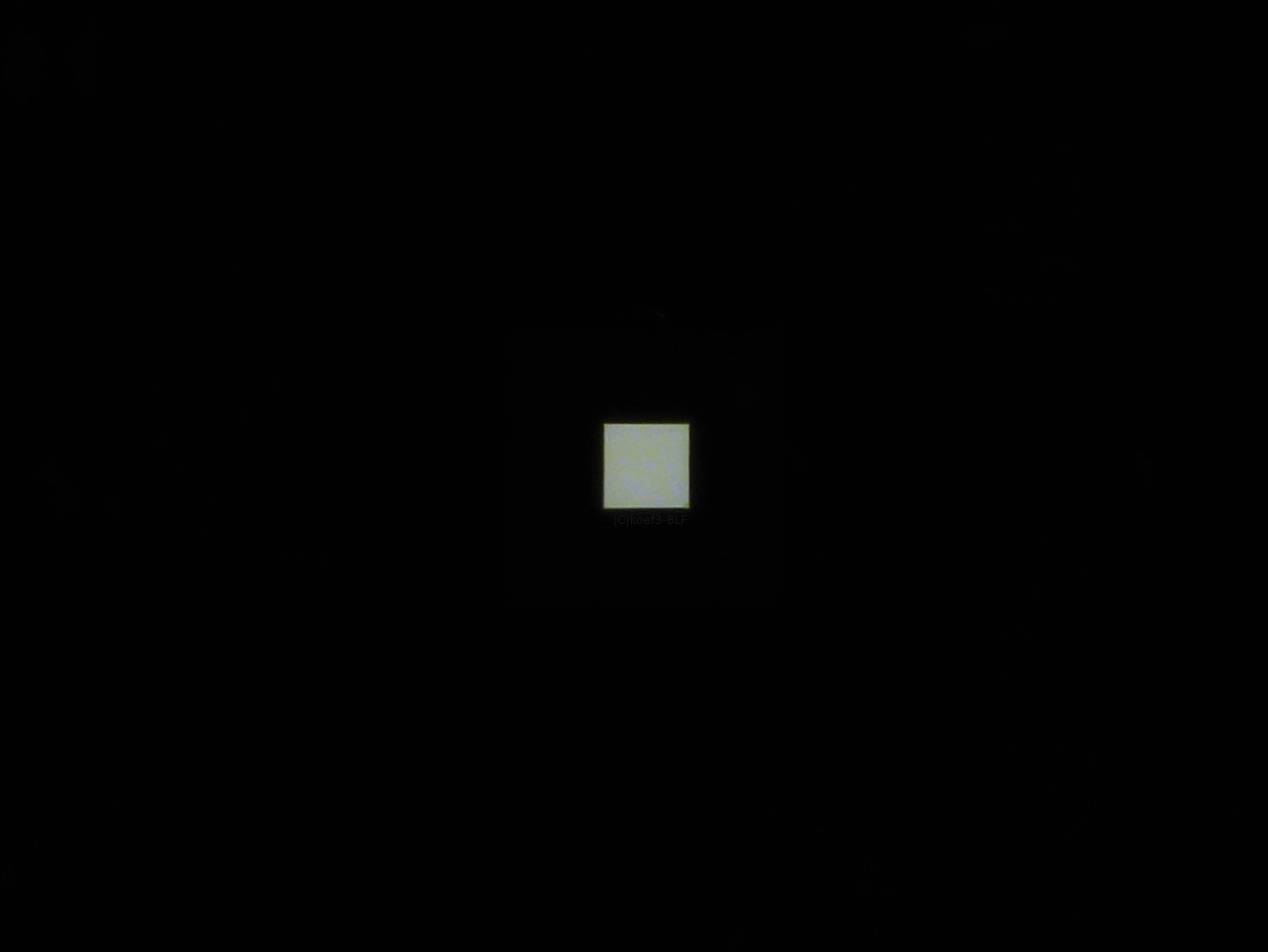
The square luminous surface is 1.05 mm² in size. Due to the white opaque coating, there is no light leakage to the side, which should significantly increase the luminance. There are no cutouts for bonding wires, the LED is manufactured in flip-chip technology.
Power and overcurrent cababilities

- At 3,000 mA (official maximum current): 729 lm @ 3.51 V
- Power at official maximum: 10.54 W
- Efficacy at 3,000 mA: 2 lm/W
- At 1000 mA (binning conditions, 25 °C Tj): 348 lm @ 3.07 V – converted to 85 °C acc. Cree datasheet: 296 lm
Cree guarantees a tolerance of +/- 7% on the binning according to the luminous flux. The specified binning is achieved, but only just. This was also the case with a second emitter, which even had a slightly worse efficiency (339 lm @ 1,000 mA / 25 °C Tsp).
The efficiency at official maximum current is not as high as with other emitters even in same size, with 69.2 lm/W it is far below other emitters like XP-G2 and XM-L2. At the corresponding temperature of the emitter, this efficiency decreases even more significantly; the data sheet indicates a luminous flux loss of about 15% at 85 °C Tj.
Overcurrent:
- Maximum reached at 4,800 mA, at this point 849 lm @ 3.77 V
- Power at maximum 18.1 W
- Sweet Spot at about 3 A (729 lm @ 3.51 V)
- Power in sweet spot 10.54 W
- Efficacy at maxmimum 47.0 lm/W
- Efficacy in sweet spot 69.2 lm/W
I do not recommend the use at overcurrent. The power increase is low, which indicates limited heat dissipation from the LED chip. In addition, the efficiency at maximum luminous flux is also very low, and a strong tint shift is already visible in the data sheet, which then also occurs in practice.
Luminance
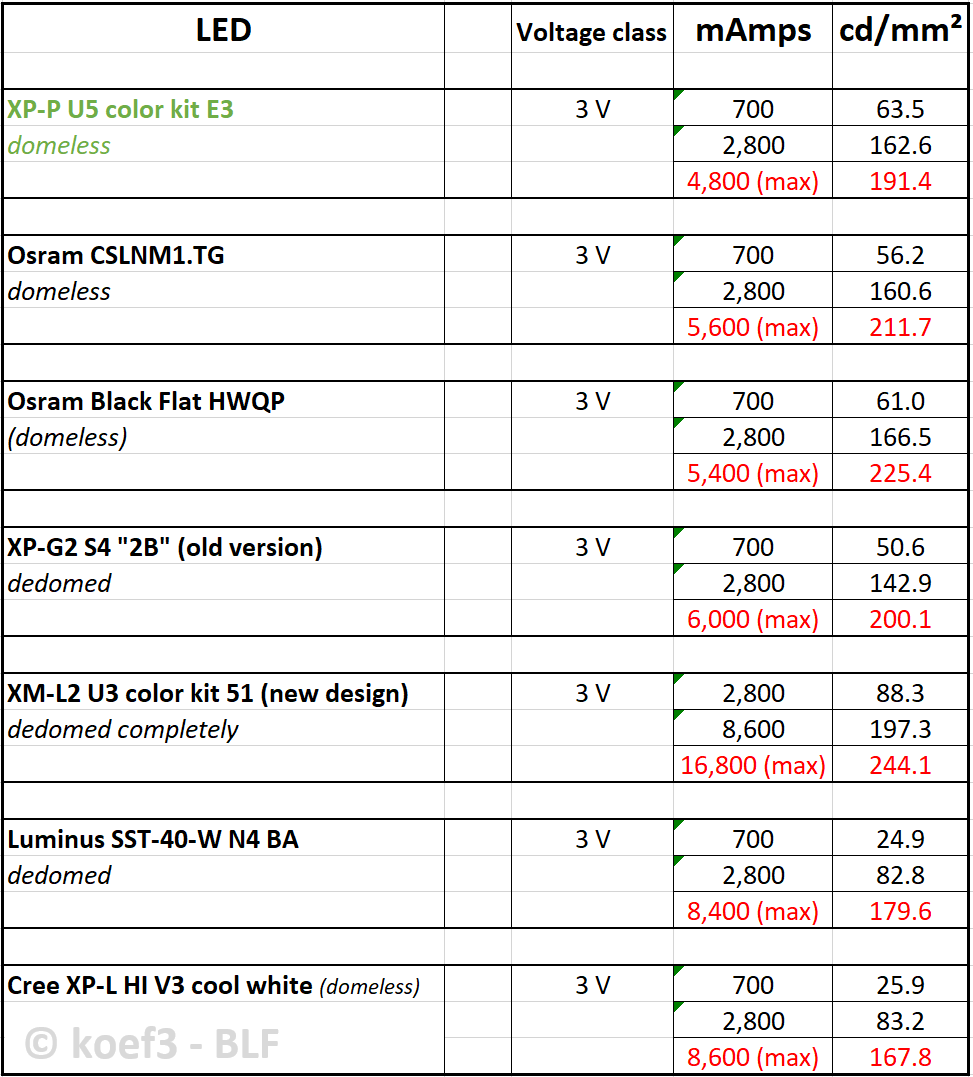
Due to the lower efficiency than expected from the binning, the luminance of the XP-P is lower. Although the luminous flux of the CSLNM1 is about 15% higher and the luminous area is virtually the same, it is on par with the XP-P in terms of luminance. However, the old Osram Black Flat HWQP is still the front-runner, although its luminous flux is a few percentage points lower. Other factors such as the beam angle, height of the emitter and alignment in the optics may play a decisive role here. Here, it is primarily the measurement methodology and the equipment that limits further/more accurate measurements.
As part of the change of measuring equipment, I measured the Black Flat HWQP again, whereby the luminance is now about 8% lower, but in view of the luminous flux seems much more realistic and was also measured by others in the BLF so.
At higher efficiency, the XP-P would easily keep up with the Osram models, but this is not the case with my two samples. The Black Flat HWQP remains the measure of all things in my table; its luminance is only reached or surpassed by the dedicated XM-L2 new design, which requires an absurdly high current, which is therefore hardly or not at all usable in practice.
Color and light quality

CCT: 5242 K
Ra: 68
R9: -44
duv: 0,0039
The XP-P tested here is sold by Cree in typ. 65 CRI binning, which is also confirmed after my measurement. The spectrum at about 5300 K corresponds pretty much to what is to be expected from such a neutral white LED. R9 is as expected very poor, for applications with high color fidelity this LED in this binning is not to be used.
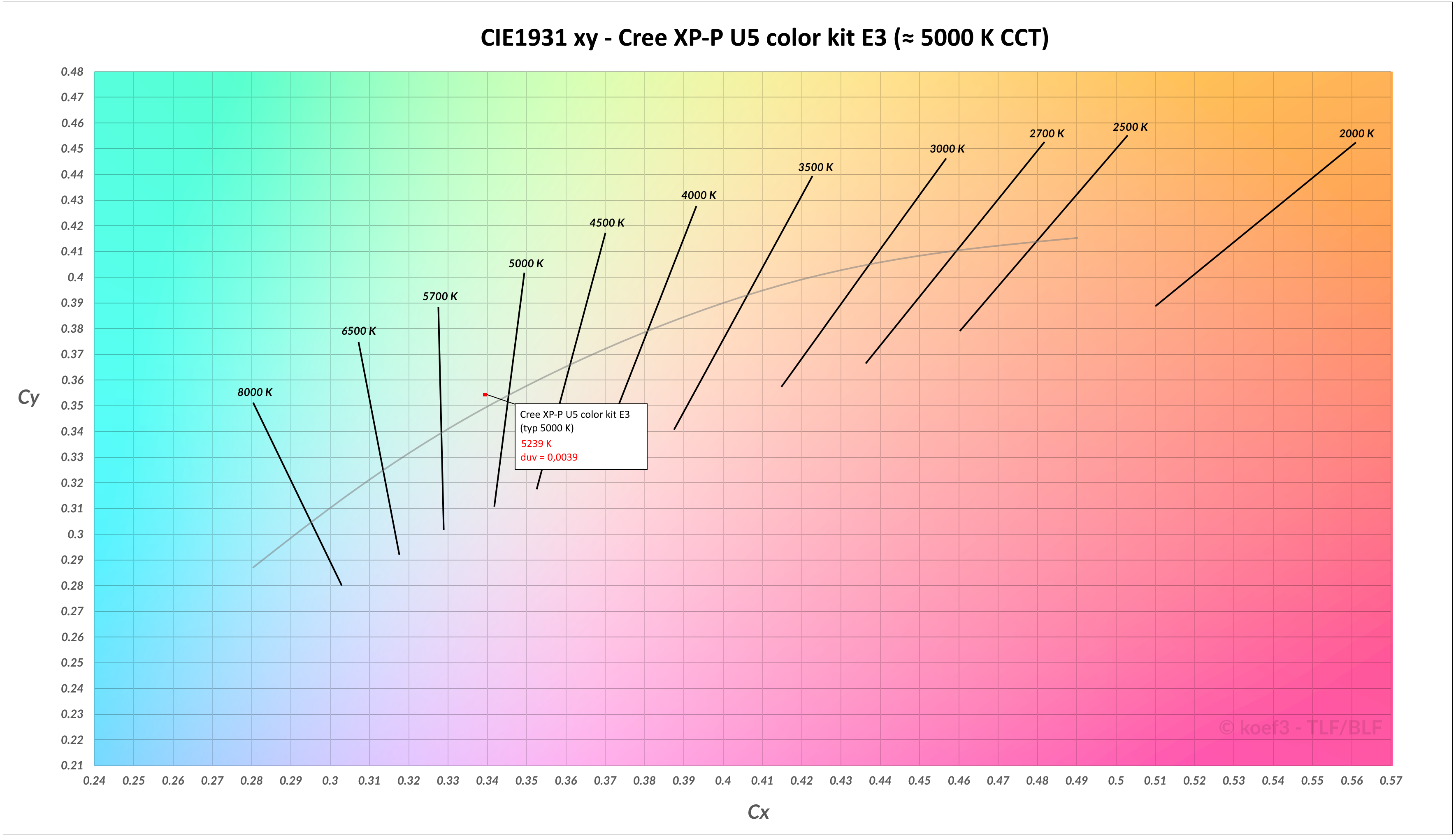
When operating close to the technically possible maximum current, it is important to note that there are strong color changes; the blue component increases visibly, which indicates rapid overheating or temperature close to Tjmax of the LED chip.
Light quality and use in optics
When emitting without secondary optics, there are no surprises, extreme color gradients as still observed with the XM-L2 new design do not exist. This LED should therefore not produce any visible color gradients even in secondary optics, which...

... is also confirmed in this way. A clearly recognizable circular spot is surrounded by a spill of the same color. This light pattern corresponds to a very throwy lamp with a large reflector. Any rings in the light image are due to the reflector used (in the picture: XP-P with reflector of Convoy C8 SMO) and can be avoided with appropriate quality and design of the optics.
Conclusion
In many points this LED is similar to the emitters from Osram, in terms of luminous area and also luminance they are almost identical. Advantage of this emitter is especially full compatibility with accessories for XP footprint, which makes upgrades or modding much easier, and the possibility to purchase this emitter in different color and power binning, which is hardly possible with Osram.
Unfortunately, the efficiency is not very high even at the official maximum current, and there is strong ink shift as overcurrent increases, plus my samples were at the lower end of the specified power binning.
If overcurrent is not a priority and an easy to upgrade luminosity is desired, this emitter is definitely worth a closer look!
Pro
- XP-Footprint, therefore full compatibility for accessories of the XP-Footprint
- Very good light image in optics
- Very high luminance especially at low current
- Available in many color and power binnings
Neutral
- Higher price than comparable emitters
- Overcurrenting hardly worthwhile
Contra
- Low efficiency at maximum luminous flux
- Power bin not reached for both samples
- Strong color distortion and rapidly decreasing luminous flux near maximum current
Thank you for reading the test. I wish you a happy new year! :)
Greetings, Dominik